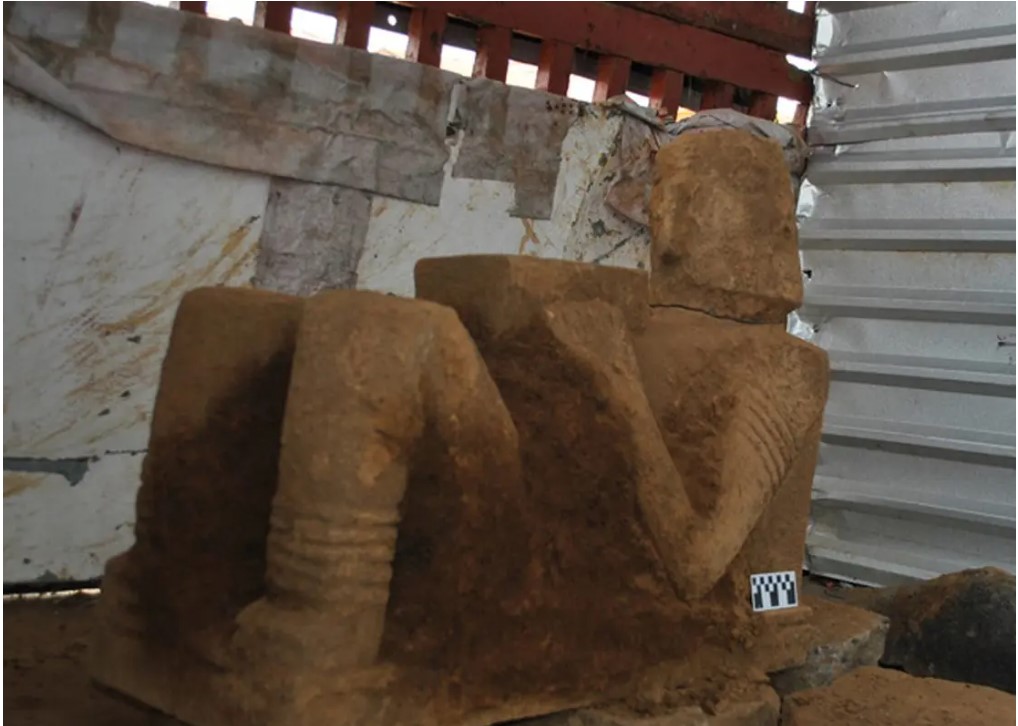Archaeological Unearthing: Traces of the Tepuztecos Revealed
In a recent expansion endeavor of the Puerto del Varal-Corral de Piedra highway at Barranca Chihuila-Corral de Piedra, archaeologists have brought to light remnants linked to the enigmatic Tepuztecos civilization. These artifacts emerge as part of an ongoing exploration shedding light on this ancient culture, also known as the Tlacotepehuas, which thrived in what is now Tlacotepec in Guerrero, situated in south-western Mexico.
The historical footprint of the Tepuztecos remains rather elusive, with minimal information existing beyond their name, preserved in Aztec records. The term “tepuzque,” utilized by the Mexica to denote copper alloys, stands as a sole reference to the metalwork crafted by this civilization.
As the expansion efforts of the Barranca Chihuila-Corral de Piedra highway unfolded, specialists from the National Institute of Anthropology and History (INAH) unearthed a substantial 34-meter-long wall. This wall, constituting the initial tier of a multi-tiered structure, marks a significant discovery within the cultural context.
The excavation at this site exposed fragments of both human and animal bones intermixed with the wall’s construction materials. Notably, the remains of an infant, aged between three to four years, were also found, accompanied by a burial adorned with offerings. These tributes comprised green stone beads, copper bells, shell earrings, and a Yestla-El Naranjo-type tripod bowl, indicating a temporal range spanning from AD 1000 to 1521, prior to the Spanish Conquest.
Pérez Negrete, an archaeologist involved in the project, remarks, “Our insight into this ethnic group and its culture remains limited; however, we are aware of their deities, including Andut and Macuili Achiotl. The female representation of Macuili Achiotl in sculpture or stone painting stands as an attestable facet of their beliefs.”
Furthermore, the expedition yielded the discovery of a system of walls composed of sizeable limestone blocks veneered with lime stucco. Associated stucco floors featuring red pigmentation also emerged. Concurrently, objects such as obsidian artifacts and an extensive array of ceramics from the Postclassic period (AD 500 to 1500) were found. This dual-period occupation suggests a layered history of habitation at the site.
Lucero Hernández, another archaeologist on the team, emphasized the exploratory nature of these findings. “This marks the initial stage of investigations that promise fresh insights into the world of the vanished Tepuztecs. Our pursuit seeks to comprehend the social and cultural intricacies of the region’s vibrant pre-Hispanic past, alongside deciphering the era of the societies that forged the distinctive Yestla-Naranjo ceramics.”
In essence, the unearthing of the Tepuztecos remnants through the expansion of the Puerto del Varal-Corral de Piedra highway illuminates an enthralling chapter of history. These revelations contribute substantially to our comprehension of the Tepuztecos culture and the intricate tapestry of pre-Hispanic societies in the region.




